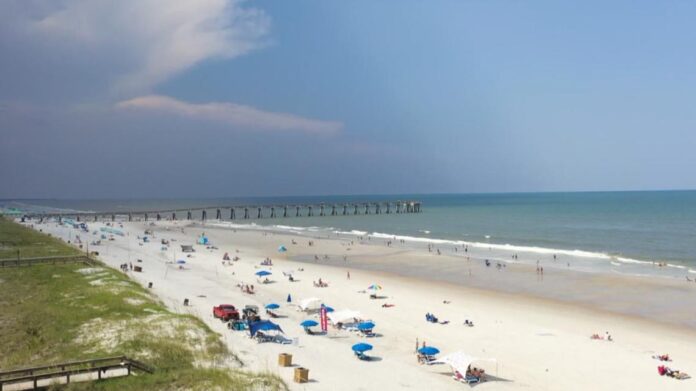
Rip currents have caused 192 deaths along the Carolina coast since 2000. It’s one of the reasons for this year’s rip current awareness campaign by the NWS.
CHARLOTTE, N.C. — Since 2000, there have been 192 fatalities along the Carolina coast due to rip currents. Not surprisingly, this is the number one weather-related killer in the coastal Carolinas.
The National Weather Service is launching its Inaugural Carolinas Rip Current Awareness Week.
A rip current is a narrow channel of fast-moving water that can reach speeds up to 8 feet per second, which is faster than an Olympic swimmer.
While rip current safety is extremely important for everyone who spends time at the beach, it’s especially important for those who don’t live near the water.
Data from the National Weather Service shows that only 20% of rip current deaths along the Carolina coast are people who live there. The other 80% come from inland residents, including portions of North Carolina and South Carolina.
Erik Heden, the warning coordination meteorologist at the National Weather Service in Morehead City, advised to swim parallel to the shore until you get away from the rip current.
“Rip currents don’t pull you under. They’re very narrow,” Heden said. “They pull you out, and your natural reaction is to try to fight and go back to shore.”
Fighting against the current can tire you out and cause drowning. If you don’t feel comfortable swimming, there’s also the option to float on your back until help arrives.
Heden added that it is almost impossible to see a rip current unless you’re elevated above the water.
Additionally, rip currents can occur on a sunny beach day, which can make rip currents almost a silent threat. Compared to something visual, like a thunderstorm or hurricane.
The Carolina coast is also unique since part of it juts out into the ocean. This means we are impacted by storms well offshore.
“It doesn’t have to be a hurricane making a direct impact on our area that swell reaches the coastline, and we’ve seen that usually a handful of times each year,” Heden said.
The key is knowing before you go, checking the forecast, adhering to beach warning flags, and, if possible, only swimming at beaches where a lifeguard is present.
Contact Brittany Van Voorhees at bvanvoorhe@wcnc.com and follow her on Facebook, X and Instagram.



